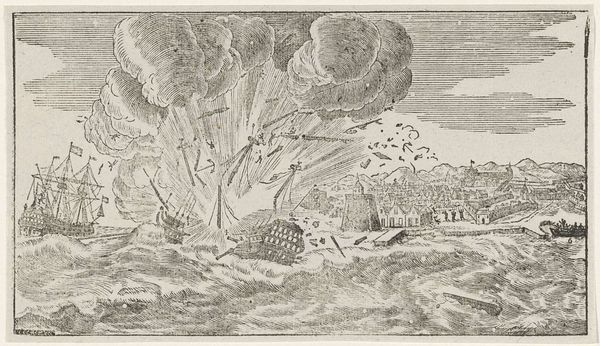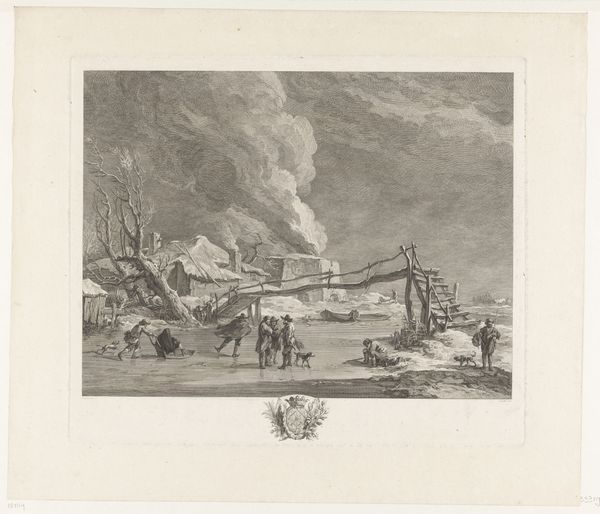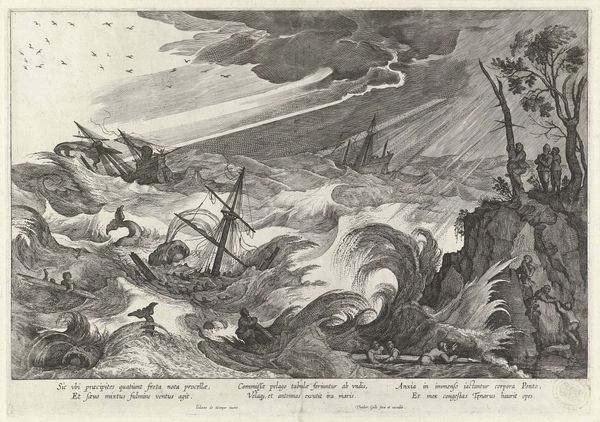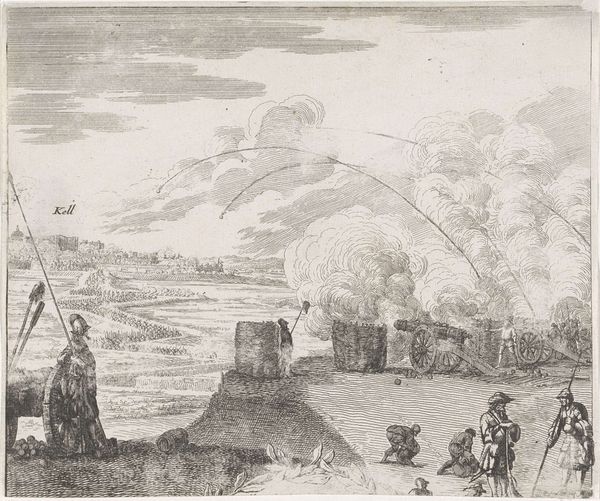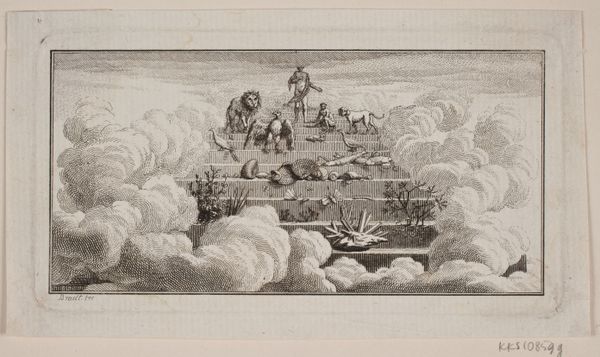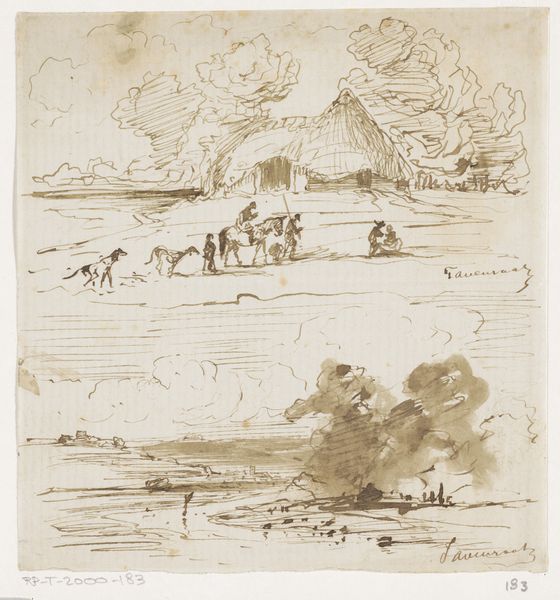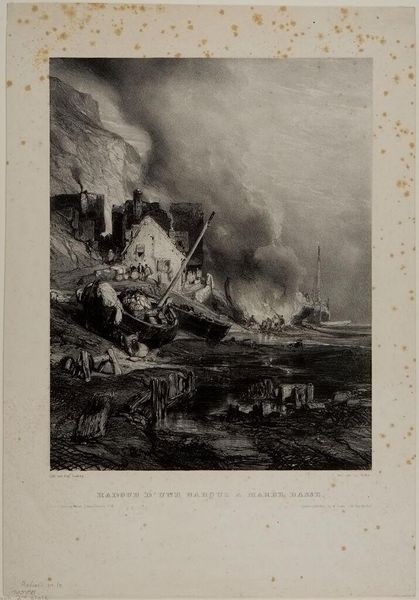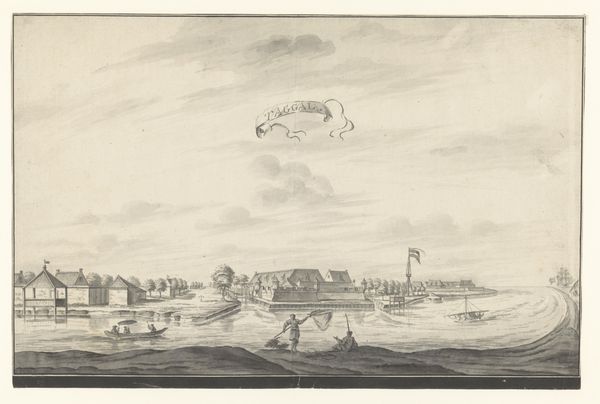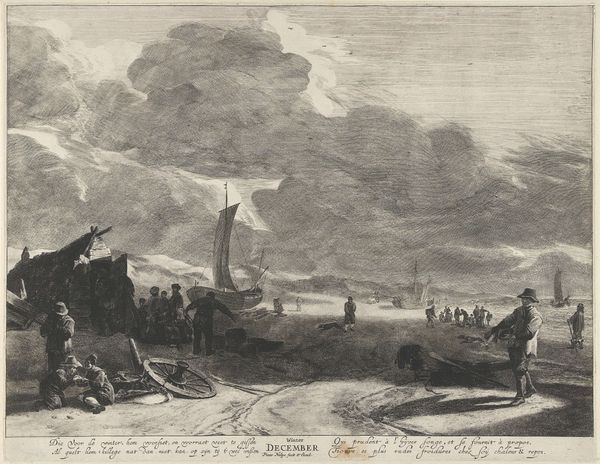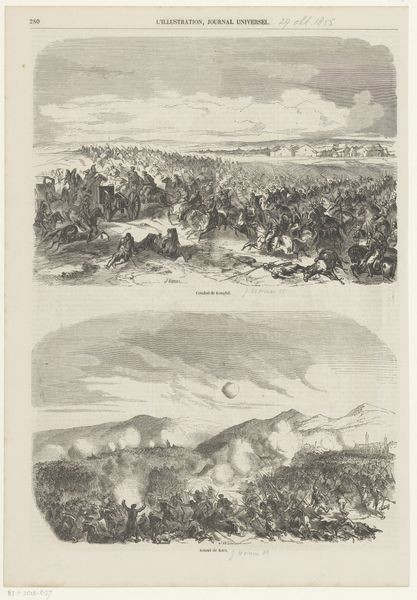
drawing, ink, pen
#
drawing
#
pen illustration
#
pen sketch
#
landscape
#
ink
#
sketchbook drawing
#
pen
#
genre-painting
Dimensions: height 130 mm, width 105 mm
Copyright: Rijks Museum: Open Domain
Curator: It feels melancholic, doesn't it? I mean, just at first glance. All that wispy ink… a hazy memory trying to surface. Editor: That's a powerful feeling, and maybe intentional. What we are looking at here is a pen and ink drawing from around 1660 by Wouter Schouten. It's called “Sketches of a Prauw and Two Bamboo Rafts,” and it's far more complex than just a hazy memory. Curator: Complex, how so? Beyond the praus—those Southeast Asian boats—and rafts…what’s brewing under the surface, or rather, on the page? Editor: Think about the Dutch East India Company at that time. Schouten was a surgeon who travelled extensively. This image likely reflects encounters, perhaps exploitative ones, within a colonial context. These aren’t just benign sketches; they represent power dynamics, the act of observing, recording, and, arguably, possessing. Curator: Oh, heavier than I first considered. It’s strange though. Even knowing that, that light still hits the smoke and water...the textures in the ink...it all retains a kind of…fragile beauty. Does that make sense? Like a complicated sort of sorrow. Editor: Absolutely. That's the inherent tension in much of this period's art. Skill, technique, and that "fragile beauty" are often used to normalize oppressive acts. Notice the way the sketches are organized, almost clinically observed. Yet there's an attempt at portraying lived reality…bamboo rafts, figures in water, maybe that surgeon had seen that smoke from up close as well… It's fraught. Curator: Fraught is the perfect word. I guess, like any souvenir, whether from the 17th century or now, there is always more than meets the eye. Some hold histories, some, if we’re honest, wounds. Editor: Precisely. Art is never neutral. Considering coloniality asks us to reckon with uncomfortable truths, not just about history, but about how these echoes still affect the present. What do you see? Who benefits from whose narratives? Curator: What a haunting—and crucial—reminder. So glad we took another look! Editor: Me too. It always gets more insightful every single time, right?
Comments
No comments
Be the first to comment and join the conversation on the ultimate creative platform.
